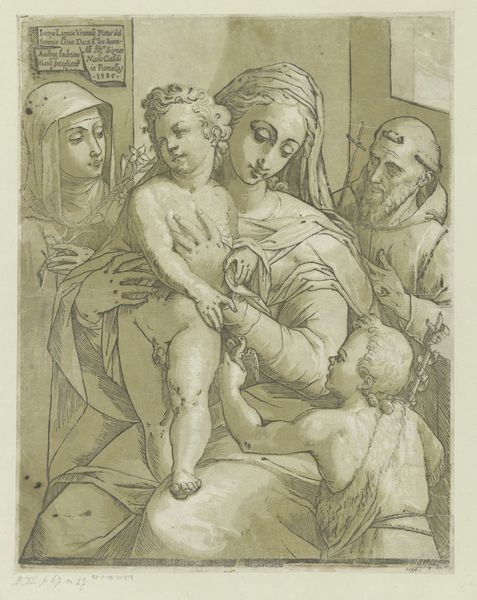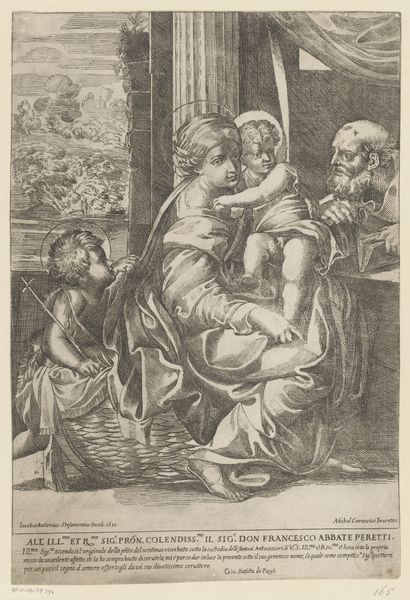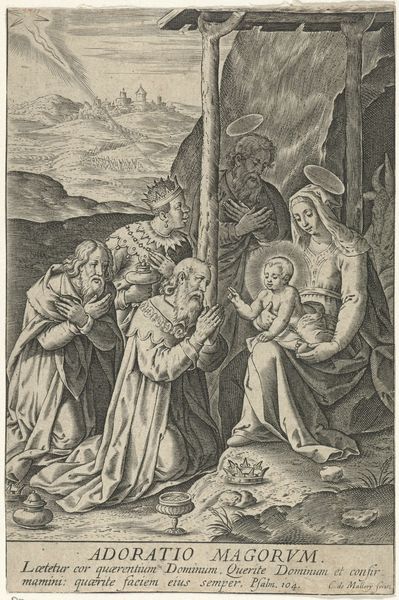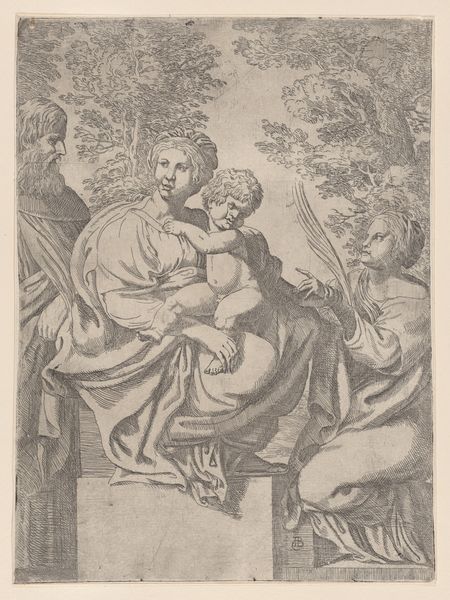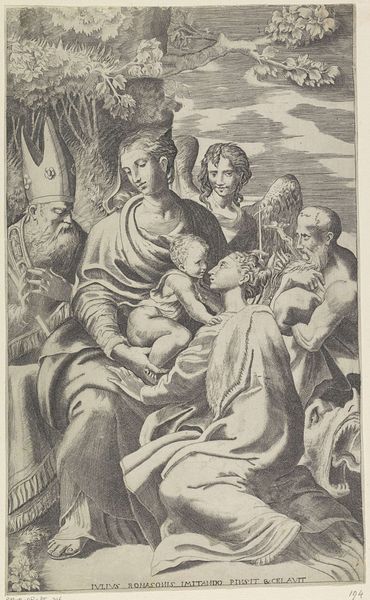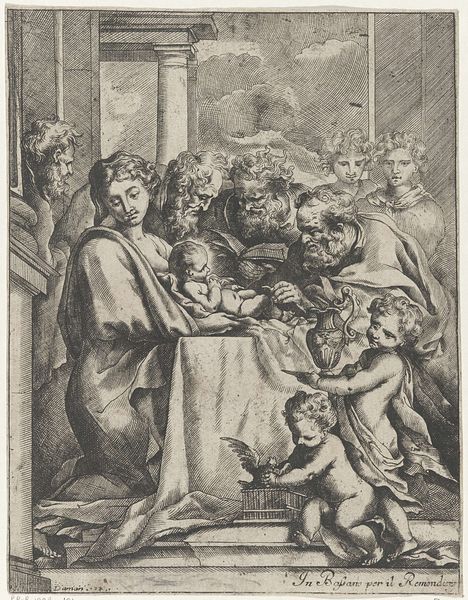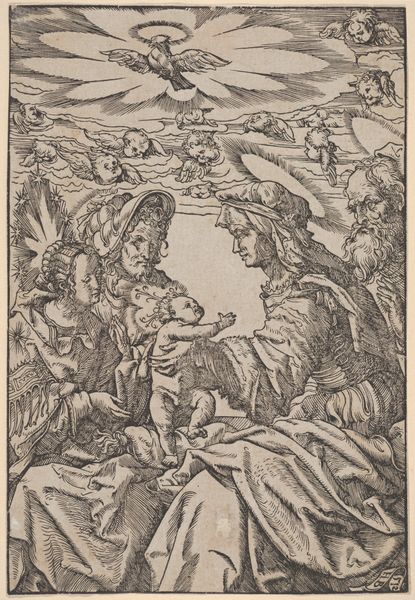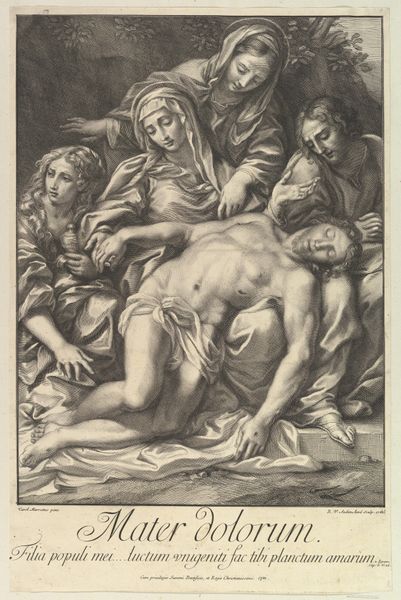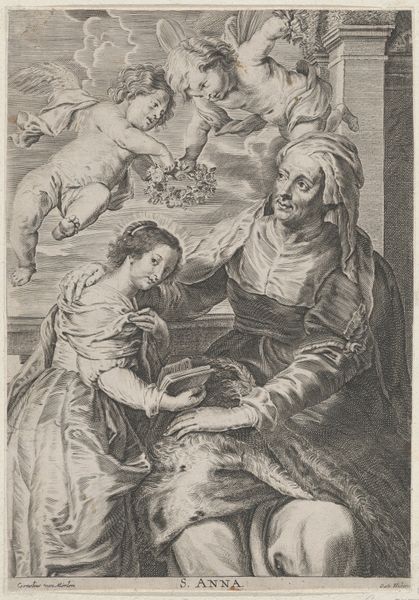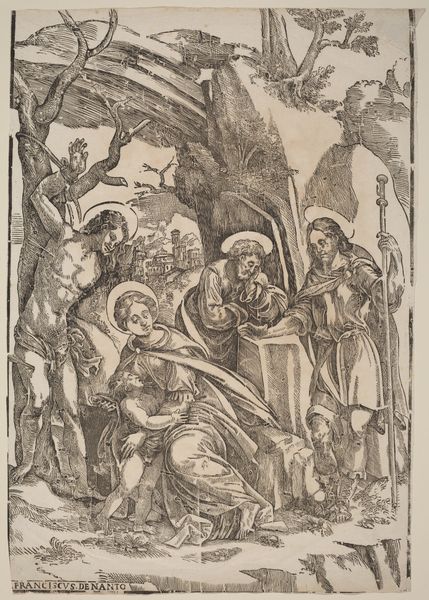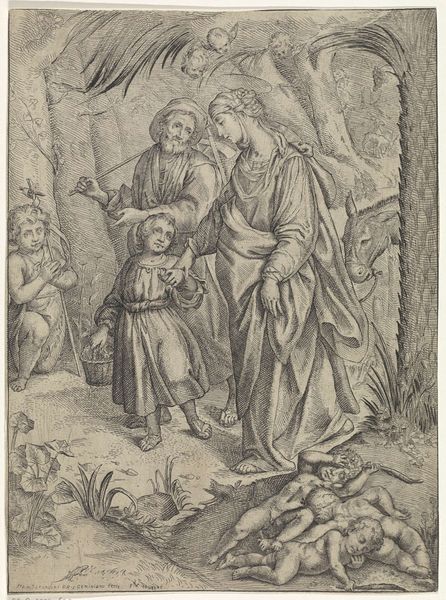
The Holy Family with Mary Magdalene and John the Baptist who embraces Christ 1543
0:00
0:00
drawing, print, intaglio
#
drawing
# print
#
intaglio
#
figuration
#
11_renaissance
#
history-painting
#
italian-renaissance
#
christ
Dimensions: sheet: 10 7/8 x 7 13/16 in. (27.7 x 19.9 cm)
Copyright: Public Domain
Curator: This is Giulio Bonasone’s "The Holy Family with Mary Magdalene and John the Baptist who embraces Christ," created in 1543. It is currently housed here at the Metropolitan Museum of Art. What's your initial take? Editor: I’m struck by the pervasive sense of quiet contemplation. Despite the active embrace between the two children, there's an overwhelming feeling of stillness, of suspended time, even within a larger composition filled with many figures. Curator: Interesting observation. From a material perspective, this is an intaglio print—a process involving engraving into a metal plate. Look at the density of the lines, the sheer labor involved in creating this image, and imagine the Renaissance workshop where it was produced and the network it took to circulate and distribute this imagery! Editor: Absolutely, and that labor translates into visual density, enriching the image's symbolic weight. John embracing Christ speaks volumes. It prefigures the baptism, yes, but also symbolizes profound affection and mutual recognition of their intertwined destinies. And notice Mary's book? She is both learned and prophetic. Curator: And what do we make of that water jug? The inclusion of domestic items and their circulation within such refined sacred themes is also relevant, I believe. We must consider how objects obtain symbolic and, dare I say, economic significance. Editor: The jug alludes to purification, a vital aspect of religious practice and a precursor to baptism. But I am especially interested in the rainbow pictured. It's often interpreted as God's covenant, representing hope and reconciliation, but Bonasone subtly positions it in the background as a celestial confirmation of Christ’s purpose on Earth. The castle or fortress visible is also suggestive and might symbolize the church’s defense of the faith. Curator: So you see how the Renaissance world used materials – printed images circulated through the growing commercial networks – to reinforce ideas. They served the consumption of particular symbolic languages through art. These processes would impact history irrevocably. Editor: Precisely! And recognizing the depth within these images—built over time with consistent application and careful selection of motifs, reinforces art's role as a carrier of memory. Curator: Thanks for highlighting the visual intricacies; it allows one to reflect on material conditions and what those engravings would inspire. Editor: The beauty and nuance of the symbolic conversation is what endures with the test of time.
Comments
No comments
Be the first to comment and join the conversation on the ultimate creative platform.
